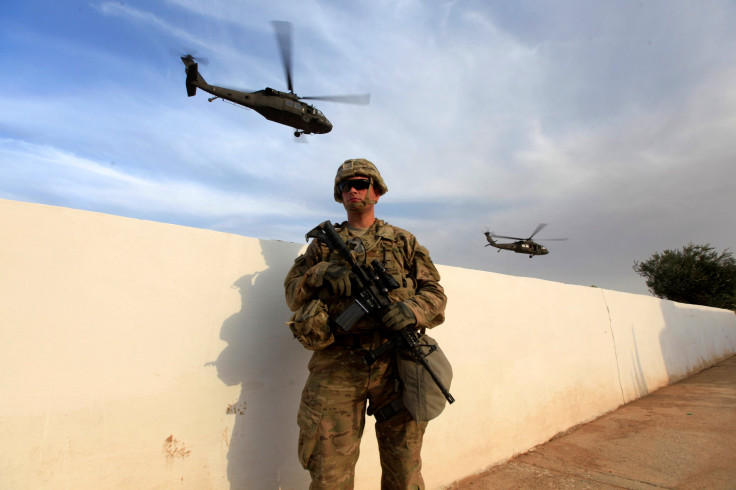Global Weapons Sales: US-Based Companies Continue To Dominate Despite Fall In Sales, Report Shows

Weapons sales across the world decreased in 2015, the fifth consecutive year in which such sales have dropped despite several ongoing conflicts, according to a report by Stockholm International Peace Research Institute (SIPRI) released Monday.
The SIPRI Top 100 — the 100 largest arms-producing and military service firms in the world — sold a total of $370.7 billion last year, a decrease of 0.6 percent from the year before. While companies based in the United States continued to dominate the list — registering with total arms sales amounting to $209.7 billion in 2015 — they saw a decrease of 2.9 percent compared to data for 2014, a bigger difference than the global decrease.
“Lockheed Martin remains the largest arms producer in the world,” said Aude Fleurant, Director of SIPRI’s Arms and Military Expenditure Programme, in a press release. “However, US companies’ arms sales are constrained by caps on US military spending, delays in deliveries of major weapon systems and the strength of the US dollar, which has negatively affected export sales.”
The trend differed for companies in Western Europe as they listed an increase of 6.6 percent in 2015 compared to the year before, defying the sales for the year before. Six French companies in the Top 100 showed a rise of 13.1 per cent compared with 2014 while three German companies continued to increase their combined sales by 7.4 per cent in 2015. There was also a 2.8 percent increase in the sales of companies based in the United Kingdom — the second-largest seller in the world with 10.6 percent of total global sales.
Russia also registered a similar increase — 6.2 percent — but companies based out of the country saw a dip in their ranking in the Top 100 because of a slower pace of growth, according to SIPRI Senior Researcher Siemon Wezeman.
In the list’s emerging producers, South Korea led the group with sales increasing by 31.7 per cent in 2015. Wezeman said in the release, “All South Korean companies show higher arms sales in 2015, reflecting their growing capacity to meet the South Korean Ministry of Defense’s demand and their ongoing success in the international market.”
The decrease in arms sales registered by U.S. companies were the reason for the overall sales dipping but global trends are shifting towards an increase with Western Europe and emerging nations putting in considerable effort to make their defense self-sufficient, a move that could possibly give a push to the arms race globally.
© Copyright IBTimes 2024. All rights reserved.












